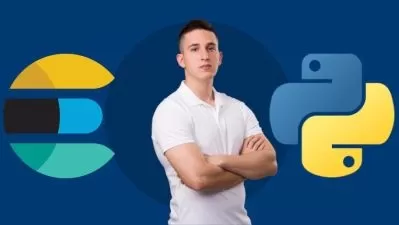Graph Your Data With Python and ggplot
Martin Breuss
59:33
Description
In this course, you’ll learn how to use ggplot in Python to create data visualizations using a grammar of graphics. A grammar of graphics is a high-level tool that allows you to create data plots in an efficient and consistent way. It abstracts most low-level details, letting you focus on creating meaningful and beautiful visualizations for your data.
There are several Python packages that provide a grammar of graphics. This course focuses on plotnine since it’s one of the most mature ones. plotnine is based on ggplot2 from the R programming language, so if you have a background in R, then you can consider plotnine as the equivalent of ggplot2 in Python.
This course assumes that you already have some experience in Python and at least some knowledge of Jupyter Notebook and pandas. To get up to speed on these topics, check out Jupyter Notebook: An Introduction and Using Pandas and Python to Explore Your Dataset.
What You'll Learn?
- Install plotnine and Jupyter Notebook
- Combine the different elements of the grammar of graphics
- Use plotnine to create visualizations in an efficient and consistent way
- Export your data visualizations to files
More details
User Reviews
Rating
Martin Breuss
Instructor's CoursesAs someone who learned programming primarily through online resources, I feel that I have a good understanding of how important high quality learning material is.
With a background in education, I worked as a coding mentor, code reviewer, curriculum developer, and bootcamp instructor. Quality education and figuring out how to have fun while learning unfamiliar topics effectively has always been a big topic in my life. Real Python provides all that, and I’m happy that I can contribute.
In my day job I create online courses and teach on-site bootcamps around the world with CodingNomads. This position keeps me traveling, teaching, learning, discovering new places and new aspects of Python, as well as getting to know interesting and motivated students year-round.
When you learn to program, you’re learning to instruct a universal tool. People have described programming as the literacy of the 21st century, and I think that there’s something to that idea.
That doesn’t mean that you need to become a full-time software developer to apply your programming skills productively. Most likely there is way how your interests can benefit from being able to skillfully instruct your personal universal tool. And Python is a great language to get started with and also to keep going.
I’m happy to help out with thoughts and resources as well as encouragement.
If you’re stuck, remember that everyone gets stuck and if you feel you don’t know much, keep in mind that most of us feel that way quite often. Take a break, maybe go on a walk outside or do what it takes for you to keep yourself feeling good.
It’s easier to stick with something for the long term when you’re finding enjoyment in what you do. Remember that learning anything new is more of a marathon than a sprint. :)

Real Python
View courses Real Python- language english
- Training sessions 18
- duration 59:33
- English subtitles has
- Release Date 2023/01/05










